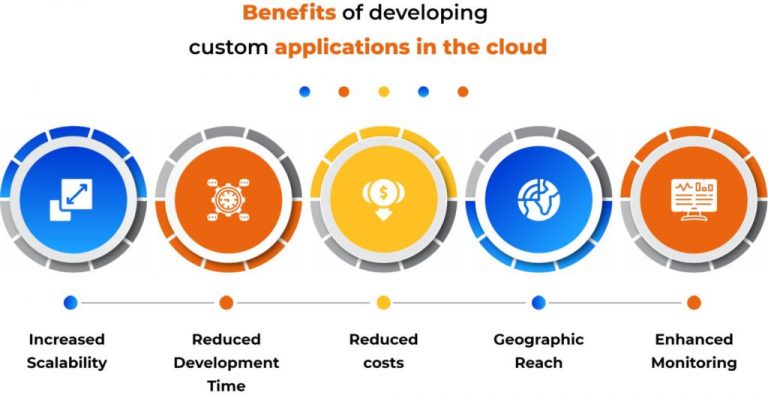
The rapidly evolving landscape of software development has given rise to innovative approaches that prioritize efficiency, security, and scalability. Among these, the integration of thin clients in custom cloud software development stands out as a robust solution with the potential to transform how businesses build and deploy applications. In this article, we at Itirra, a leading Seattle-based healthcare software development company, will delve into the world of thin clients and their role in custom cloud software development.
As experts in healthcare technology and custom software development, we recognize the growing demand for solutions that are not only secure and reliable but also easily adaptable to ever-changing requirements. By harnessing the power of thin clients and cloud technology, organizations can create agile, resilient, and cost-effective software solutions that address these needs.
Throughout this article, we will discuss the fundamental principles of thin clients, explore the benefits of integrating thin clients in custom cloud software development, and outline strategies for optimizing your development process using thin clients. Our goal is to equip you with the knowledge and insights necessary to leverage the potential of thin clients and cloud technology, creating secure, efficient, and scalable custom software solutions for the future.
What is thin client technology in custom cloud software development?
Thin client technology is an approach where lightweight, simplified devices or software clients are used to access applications and resources hosted on centralized cloud servers. By offloading most processing and storage tasks to the cloud, thin clients enable a more efficient, secure, and scalable deployment environment. In this section, we will explore the principles of thin client technology and how it relates to custom cloud software development.
Centralized resources
The core concept of thin clients is their reliance on centralized computing resources in the cloud. Instead of running resource-intensive applications on local machines, thin clients connect to cloud servers where the processing, data storage, and application execution occur. This centralized approach allows for better resource management, simplified updates, and enhanced security.
Minimal hardware and software footprint
Thin clients are purpose-built devices or lightweight software clients with minimal hardware components and software requirements. This streamlined design reduces potential vulnerabilities, lowers power consumption, and simplifies the deployment and management of custom software solutions.
Secure remote access
Thin clients connect to cloud servers using secure remote access protocols, such as Remote Desktop Protocol (RDP) or Virtual Network Computing (VNC). These protocols ensure a secure connection, transmitting only necessary display information, keyboard inputs, and mouse movements, which helps maintain data security and integrity.
Better scalability
Thin clients offer exceptional scalability and flexibility in custom cloud software development. Organizations can quickly scale their infrastructure to accommodate growing demands or changing requirements without compromising performance or security by offloading processing and storage tasks to the cloud.
Streamlined management and maintenance
With thin clients, IT administrators can centrally manage and maintain the entire software infrastructure, including operating systems, applications, and security policies. This centralized approach reduces administrative overhead and ensures that all components remain up-to-date, secure, and compliant with industry regulations.
Thin client technology in custom cloud software development revolves around leveraging centralized cloud resources, minimal hardware and software footprints, secure remote access, and streamlined management to create efficient, secure, and scalable custom software solutions. By integrating thin clients into the development process, organizations can optimize their infrastructure and better address modern software development’s unique challenges and requirements.

Advantages of thin clients in custom cloud software development
The fusion of custom cloud software development and thin clients offers a compelling set of advantages for organizations seeking efficient, secure, and scalable solutions. By leveraging the unique characteristics of both thin clients and cloud technology, businesses can reap numerous benefits that streamline the development process and improve application performance. Here are the key advantages of combining custom cloud software development with thin clients:
Enhanced security
Integrating thin clients in custom cloud software development can significantly bolster security by centralizing data storage and processing on secure cloud servers. This minimizes the risk of unauthorized access, data breaches, and malware infections while ensuring that sensitive information never leaves the secure server environment.
Improved resource management
Centralized cloud resources enable better resource management and allocation, allowing organizations to optimize their infrastructure and minimize resource wastage. Thin clients help reduce the computing load on local devices, ensuring that resources are used efficiently and effectively.
Reduced total cost of ownership (TCO)
Combining thin clients with custom cloud software development can lead to lower hardware, maintenance, and energy costs. This reduced TCO frees up resources that can be reinvested in enhancing the security, functionality, and performance of custom software solutions.
Simplified software deployment and maintenance
Centralized management of thin client infrastructures enables IT administrators to deploy, update, and maintain custom software applications efficiently. By eliminating the need to manage individual endpoints, organizations can maintain a more secure and up-to-date software environment.
Increased flexibility
The combination of thin clients and custom cloud software development allows organizations to easily scale their infrastructure to meet fluctuating demands and evolving requirements. This adaptability enables businesses to respond more effectively to changing market conditions and customer needs.
Improved disaster recovery and business continuity
Cloud-based software development coupled with thin clients can enhance disaster recovery and business continuity by ensuring that critical applications and data are securely stored and backed up in the cloud. This approach reduces the risk of data loss due to local hardware failures or natural disasters.
By combining custom cloud software development with thin clients, organizations can create powerful, adaptable, and secure solutions that address the unique challenges of modern software development. These advantages empower businesses to develop and deploy high-quality applications more efficiently, effectively positioning them for success in a competitive marketplace.

Optimizing custom cloud software development using thin clients
Successfully integrating thin clients into custom cloud software development requires the implementation of strategic approaches that take advantage of their unique benefits. By adopting the following strategies, organizations can optimize their development process, creating efficient, secure, and scalable solutions:
Centralize resources and infrastructure
Begin by centralizing your computing resources, data storage, and application hosting on secure, high-performance cloud servers. This centralization allows for better resource management, streamlined updates, and enhanced security, which are essential for an optimized custom cloud software development process.
Select appropriate thin client devices and software
Choose thin client devices and software that best align with your organization’s specific requirements and development environment. Consider factors such as compatibility with remote access protocols, built-in security features, and the level of customization offered by the manufacturer. Opt for devices with solid performance, energy efficiency, and ease of management.
Implement role-based access control
Establish granular, role-based access control policies to restrict users’ access to sensitive data and applications based on their job responsibilities. By limiting access to the minimum necessary for each role, you can minimize the risk of unauthorized access and enhance overall application security.
Foster a secure deployment environment
Ensure that thin clients connect to the centralized server using secure remote access protocols, such as Remote Desktop Protocol (RDP) with encryption or Virtual Private Network (VPN) connections. These protocols help maintain the confidentiality and integrity of data transmitted between the thin client devices and the server, contributing to a secure environment.
Plan for scalability
Design your thin client deployment with scalability in mind, allowing for the seamless addition or removal of devices as needed. This will enable your organization to accommodate fluctuations in user demands and support future growth without compromising security or performance.
Streamlined management and continuous integration
Utilize centralized management tools and continuous integration (CI) processes to facilitate efficient software deployment, updates, and maintenance. Implement a proactive approach to updates, patching, and security policy enforcement, ensuring that all components remain up-to-date and in compliance with industry regulations.
Monitor and optimize
Regularly monitor the performance and security of your thin client infrastructure, including the server environment and connected devices. Analyze performance metrics and user feedback to identify potential areas for improvement or optimization. By continuously refining your development process, you can ensure maximum efficiency and the best possible outcomes for your custom cloud software projects.
By implementing these strategies, organizations can effectively integrate thin clients into their custom cloud software development process, capitalizing on this technology’s numerous benefits.
Conclusion
The integration of thin clients in custom cloud software development presents an innovative and effective approach to address the unique challenges faced by modern businesses. By leveraging the benefits of centralized resources, minimal hardware and software footprints, secure remote access, and streamlined management, organizations can create custom software solutions that are more secure, efficient, and scalable than ever before.
At Itirra, a leading Seattle-based healthcare software development company, we are committed to helping organizations navigate the complexities of modern software development, including the integration of thin clients and cloud technology. By providing expert guidance, industry insights, and tailored solutions, we support our clients in their pursuit of secure, efficient, and high-quality custom software solutions.
We believe that the combination of thin clients and custom cloud software development has the potential to shape the future of software development, and we are dedicated to helping our clients unlock the full potential of this transformative approach.
